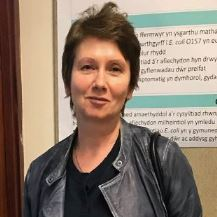Extremophilic Microorganisms and Their Communities
A special issue of Microorganisms (ISSN 2076-2607). This special issue belongs to the section "Environmental Microbiology".
Deadline for manuscript submissions: closed (31 December 2022) | Viewed by 19106
Special Issue Editors
Interests: microbial diversity; archaea; extremophiles; acidophiles
Special Issue Information
Dear Colleagues,
It is generally appreciated that microorganisms thriving in extreme environments with physical-chemical conditions hostile to common life are taxonomically, genetically, and metabolically diverse and exhibit a plethora of exiting, often counterintuitive, mechanisms of adaptation of a fundamental and applied significance. Environmental parameters where these microorganisms thrive include extreme (high or low) temperatures, pH values, elevated salinities, high hydrostatic pressure, low water activity, high levels of ionizing radiation, and high concentrations of heavy metals or organic solvents. Although extremophilic microbiology is quickly expanding, many aspects still need to be explored and understood, and new microorganisms inhabiting extreme environments still await their isolation and characterization. The aim of this Special Issue is to inform a broader readership on recent studies on extremophilic microorganisms and their communities examined through a range of approaches, from in silico to wet lab investigations and cultivation. As Guest Editors of the Microorganisms Special Issue “Extremophilic Microorganisms and their Communities”, we are looking forward to receiving your valuable contributions in the form of either original research or review papers.
Dr. Olga V. Golyshina
Dr. Michail M. Yakimov
Guest Editors
Manuscript Submission Information
Manuscripts should be submitted online at www.mdpi.com by registering and logging in to this website. Once you are registered, click here to go to the submission form. Manuscripts can be submitted until the deadline. All submissions that pass pre-check are peer-reviewed. Accepted papers will be published continuously in the journal (as soon as accepted) and will be listed together on the special issue website. Research articles, review articles as well as short communications are invited. For planned papers, a title and short abstract (about 100 words) can be sent to the Editorial Office for announcement on this website.
Submitted manuscripts should not have been published previously, nor be under consideration for publication elsewhere (except conference proceedings papers). All manuscripts are thoroughly refereed through a single-blind peer-review process. A guide for authors and other relevant information for submission of manuscripts is available on the Instructions for Authors page. Microorganisms is an international peer-reviewed open access monthly journal published by MDPI.
Please visit the Instructions for Authors page before submitting a manuscript. The Article Processing Charge (APC) for publication in this open access journal is 2700 CHF (Swiss Francs). Submitted papers should be well formatted and use good English. Authors may use MDPI's English editing service prior to publication or during author revisions.
Keywords
- extremophilic microorganisms
- extremophilic bacteria and archaea
- extremophilic microbial communities
- extreme environments







